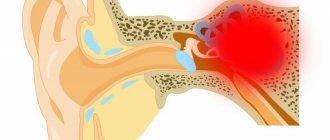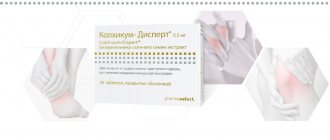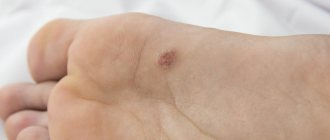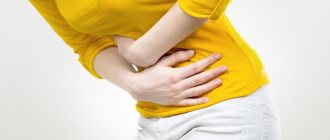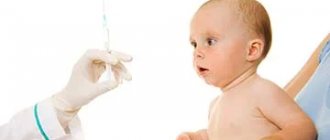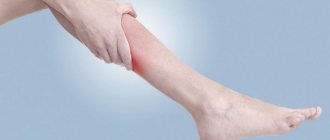Heel pain when walking
- a frequent companion of a modern person, especially if, due to the nature of his work, he spends a lot of time on his feet. Heel pain can be caused not only by fatigue, but also by soft tissue bruises caused by an uncomfortable heel or direct injury. But most often, discomfort that lasts for weeks indicates the presence of a disease.
Most patients manage to ignore the onset of diseases localized in the sole area: pain in the heel when stepping is attributed to work loads, uncomfortable shoes, varicose veins and age-related changes. However, frequent, daily and, especially, acute pain that intensifies over time is a sure sign of a disease that can affect the tendons, articular cartilage and bones in the heel area.
You should be especially alert to severe pain in the heels, which begins in the morning, immediately after waking up and walking for a short time.
. If you didn’t conquer the mountains yesterday and spent a normal day, but your feet are “humming” - read the article to find out how to treat heel pain when you step.
Heel pain often bothers modern people who lead an active lifestyle.
Causes of pain in the heel
The most common reasons:
- Injuries. They lead to cracks in the bones of the foot, stretching or rupture of the ligaments, damage to the cartilage and joint capsule. It happens that the pain is not so severe as to significantly affect the ability to walk. He endures, and meanwhile the changes increase, leading to tissue inflammation and redistribution of the load on the legs. With frequent subluxations, the same areas of the foot are injured, which ultimately leads to the development of degenerative changes.
- Inflammation can be of an infectious nature (bacteria, fungi and viruses) or develop due to autoimmune damage to joint tissue. The introduction of microorganisms occurs when the integrity of the skin is damaged or the immune system is weakened. With tuberculosis, penetration of pyogenic flora, purulent arthritis, bursitis, synovitis, and osteomyelitis can develop. Autoimmune damage occurs due to malfunctions of the immune system. This is observed during the long-term existence of foci of chronic infection in the body (tonsillitis, pyelonephritis, sinusitis, caries), and oncological processes. Reactive inflammation in the joints of the foot occurs against the background of common infectious diseases - flu, colds. Heel pain appears after hypothermia, against the background of the body's temperature reaction, intoxication, and catarrhal changes in the ENT organs.
- Metabolic disorders also lead to pain in the heel area. Gout is characterized by disturbances in the metabolism of uric acid, which is deposited inside the joints. This causes pain, limited mobility, and other symptoms of arthritis. Diabetes mellitus primarily affects small vessels and nerves. The blood supply to the feet deteriorates, their sensitivity decreases, and a person more often injures his feet.
Conservative treatment
The essence of conservative treatment is complete immobilization of the lower leg. When fixing the leg, it is necessary to achieve an elongated toe, which will allow the torn fibers to slowly grow together. Foot immobilization lasts on average 6-8 weeks and is carried out using the following methods:
- splinting;
- application of sports tapes (tapes);
- fixation with orthoses, which, depending on the severity of the disease, can be night or around the clock;
- gypsum, sometimes polymer;
- applying a bandage made of an elastic bandage;
- prescribing auxiliary crutches.
As medicinal measures, the doctor prescribes analgesics, anti-inflammatory drugs, and vitamin complexes. Massage and physiotherapy may also be prescribed.
What exactly hurts in the heel
A person may feel pain in the heel if any anatomical structures in this area are damaged:
- Bone - possible fresh and old fractures of the calcaneus, undiagnosed cracks, osteomyelitis, tuberculosis, congenital and acquired osteochondropathy (the composition and structure of bone and cartilage tissue is impaired), tumors. Damage to neighboring bones - the talus, cuboid, scaphoid - can also radiate to the heel.
- Joints. This could be arthritis, arthrosis, the consequences of heavy loads, wearing uncomfortable shoes. With gout, as a rule, the joints between the calcaneus, talus and navicular bones (on the inside of the foot), as well as between the calcaneus and cuboid (on the outside) are affected.
- Ligaments – possible sprain, rupture, inflammation (tendonitis). If the Achilles tendon is involved, pain is felt at the back and top of the heel. With bruises, the lateral (outer) ligaments of the ankle joint are often affected. Sometimes bone spines, growths, and tumors put pressure on the soft tissues. A heel spur is often diagnosed in the heel area. It irritates the plantar (plantar) fascia and leads to pain. Sometimes a tendon injury leads to inflammation of the synovial bursa around it, causing bursitis. There are 2 bursae on the back of the heel - just behind the heel bone and around the Achilles tendon.
- Vessels and nerves are affected by diabetes. Neuritis, angiitis (inflammation of the vascular wall) are possible after injuries, with tuberculosis, osteomyelitis, and immune disorders.
- The skin hurts from wounds, burns, cracks, fungal infections. With a sharp loss of body weight, the layer of subcutaneous fatty tissue becomes thinner, bone structures put pressure on the skin from the inside and cause pain.
Inflammatory processes of the Achilles tendon
Inflammation of the Achilles tendon, referred to in medical terminology as “tendinitis,” is a disease characterized by pain and impaired musculoskeletal function. The first people to be susceptible to tendinitis are professional athletes involved in jumping and long-distance running. In addition, the cause of the pathology are:
- increased physical activity without prior preparation;
- falling from height;
- developing achillobursitis;
- calcaneal injuries;
- wearing tight shoes or high heels;
- infection of the tendons;
- heel spurs;
- rheumatoid arthritis;
- gout;
- diabetes.
The symptoms of the disease remain classic: a burning pain appears, intensifying with movement, as well as in the morning. May be accompanied by lameness, stiffness, swelling and fever. Achilles tendon rupture often occurs , which, without timely treatment, develops into muscle atrophy. It is worth considering that ruptures cannot be repaired and require surgical intervention.
What diseases can cause heel pain?
After the examination, the patient will be diagnosed with:
- bruise, crack, broken bones, sprained ligaments;
- heel spur and resulting plantar fasciitis of the foot (inflammation of the fascia on the sole);
- inflammation of the tendon (tendinitis, tendovaginitis), the bursa that surrounds it (bursitis);
- diabetic angiopathy, neuropathy;
- gout;
- reactive arthritis of the joints of the heel area;
- osteochondropathy, osteomyelitis, bone tuberculosis;
- tarsal tunnel syndrome - tendons are compressed in a narrow space between the talus bone and a dense membrane;
- Haglund's deformity is an enlargement of the calcaneal tuberosity, which injures the Achilles tendon and causes pain.
Operative methods
If conservative treatment does not help, Achilles tendon surgery . It is often resorted to if the patient has severe damage, in particular a rupture. Surgical intervention is performed in two ways - stitching or plastic surgery:
- Stitching. It is used if the rupture is fresh, received within the last 24 hours.
- Plastic. Usually it is resorted to if long-term conservative treatment has not helped. The operation is quite complex and is aimed at transferring a piece of tendon from one part of the lower leg to another. After the manipulations have been performed, the patient is given a plaster cast.
What symptoms often accompany heel pain?
When heel pain is localized, the most likely diagnosis is a heel spur. To confirm it, X-ray diagnostics are performed. If the spur is not visible on the pictures, they look for another pathology. Before contacting a doctor, you should try to change your shoes, reduce the load on your foot, and reduce your body weight.
With a heel spur, pain occurs after a night's rest, when a person begins to walk. It hurts to step on your foot, but gradually the symptoms go away by the afternoon. Also, when walking, pain caused by the inflammatory process in the tendons (tendonitis), joint capsules (bursitis), in the periosteum (periostitis), with osteochondropathy of the calcaneal tuberosity, tumors, and after injuries may intensify. Inflammation is usually accompanied by redness, swelling of the tissues, and a local increase in temperature over the joint. A doctor can distinguish these diseases after examination.
With gout, in addition to pain in the heel, the joint of the first toe is usually enlarged. There is a painful lump on the inside of the foot; it is covered with red, hyperemic skin. Diabetes is accompanied by thirst, dry skin, appetite changes, and a lot of urine is released during the day. On the part of the legs, there is also a decrease in sensitivity, numbness, and a crawling sensation.
Achilles tendonitis
This disease is described as a pathological inflammation of tendon fibers. Most often it affects professional runners, tennis players, basketball and volleyball players who do not control the intensity and smoothness of sports training. The disease is accompanied by classic symptoms - redness, swelling, pain and stiffness of movement. Pain usually occurs during activity and subsides during rest.
During inflammatory processes, the following picture occurs: the removal of salts and metabolic products from the tissues is disrupted, causing the fibers to lose their strength and flexibility. If they continue to receive load, cracks and micro-fractures form. Over time, the tendons recover, but lose elasticity and acquire scars, therefore, in order to prevent chronic consequences, it is necessary to seek help in time.
Diagnosis for heel pain
The doctor asks the patient how long the pain in the heel lasts, after which it appeared. Examines the legs, checks sensitivity, range of motion, palpates all bones and ligaments. If there are concomitant diseases, you need to inform your doctor about them.
To clarify the diagnosis, the specialist prescribes additional examination methods:
- Urine and blood tests help confirm metabolic disorders. They check sugar, uric acid, rheumatoid factor, ESR.
- X-rays show the presence of cracks, fractures, dislocations, spurs, and degenerative changes in bone tissue. More accurate data is obtained using CT.
- A tumor marker test is performed if a tumor is suspected.
- Ultrasound and MRI help diagnose soft tissue pathology - tunnel syndrome, tumors, inflammation of tendons, cartilage, synovial membranes, bursae, subcutaneous fat, nerves, blood vessels.
- A joint puncture is performed if there is effusion. The resulting liquid is examined to identify microbes and study the cellular composition. Sometimes a bone puncture is performed followed by culture.
Medical diagnostics
Diagnosis of the disease is carried out by examination and detailed questioning of the patient. As additional measures, doctors resort to ultrasound and magnetic resonance therapy. Less commonly, radiography is used. X-ray is ineffective in identifying the cause of pain, since tendon tissue does not retain X-ray radiation, but it can detect fractures. After the doctor has made a diagnosis, comprehensive treatment of the Achilles tendon .
Achilles tendon rehabilitation
After surgery, rehabilitation time is on average 1–3 months. Not only the strength of the sutures, but also the likelihood of re-injury depends on compliance with restorative measures. Measures include a state of complete rest, lack of physical activity and fixation of the foot in an elevated position. Traditionally, rehabilitation includes the following stages:
- The use of painkillers and anti-inflammatory drugs.
- Wearing a plaster cast for the first week after surgery.
- After removing the plaster, careful development of the joint begins, but without putting stress on the sore foot. In this case, crutches are used.
- After one to two months, bandages and orthoses are applied.
The most important thing in rehabilitation is its gradualness, because any careless premature measures lead to rupture of the stitches.
Specialists of the direction
Victor Rybka
Specialist in foot surgery and kinesiotaping. Work experience 8 years
Oleg Loskutov
President of the Association of Foot Surgery, expert in the field of foot surgery and endoprosthetics. Work experience 14 years
Victor Rybka
Specialist in foot surgery and kinesiotaping. Work experience 8 years
Oleg Loskutov
President of the Association of Foot Surgery, expert in the field of foot surgery and endoprosthetics. Work experience 14 years
Preventive measures
To never have troubles with your ankle, you just need to remember about preventive measures. These include exercises for the Achilles tendon , well-chosen shoes, and a balanced diet:
- Warm up the ankle before complex physical exercises.
- Properly pump the calf muscles, thereby strengthening the limb.
- Practice the “jumping” exercise - they will ensure the elasticity of the fibers.
- Practice exercises aimed at stretching the tendon.
- Eat enough protein, calcium and vitamin D.
- Minimize heels and stilettos in everyday life.
- Buy anatomically correct shoes, namely with a hard back.
If you experience pain and discomfort in the tendon area, self-medication can play a cruel joke on you - lead to lameness or chronic inflammation. The Center for Rehabilitation Medicine offers you consultation with competent orthopedic traumatologists, advanced treatment methods and individual rehabilitation.
Free, unrestricted movements are part of our full life, so any alarming signal is a reason to call us.
You can find out the prices of the clinic in the price list or by calling: +7 (8552) 78-09-35, +7 (953) 482-66-62.



